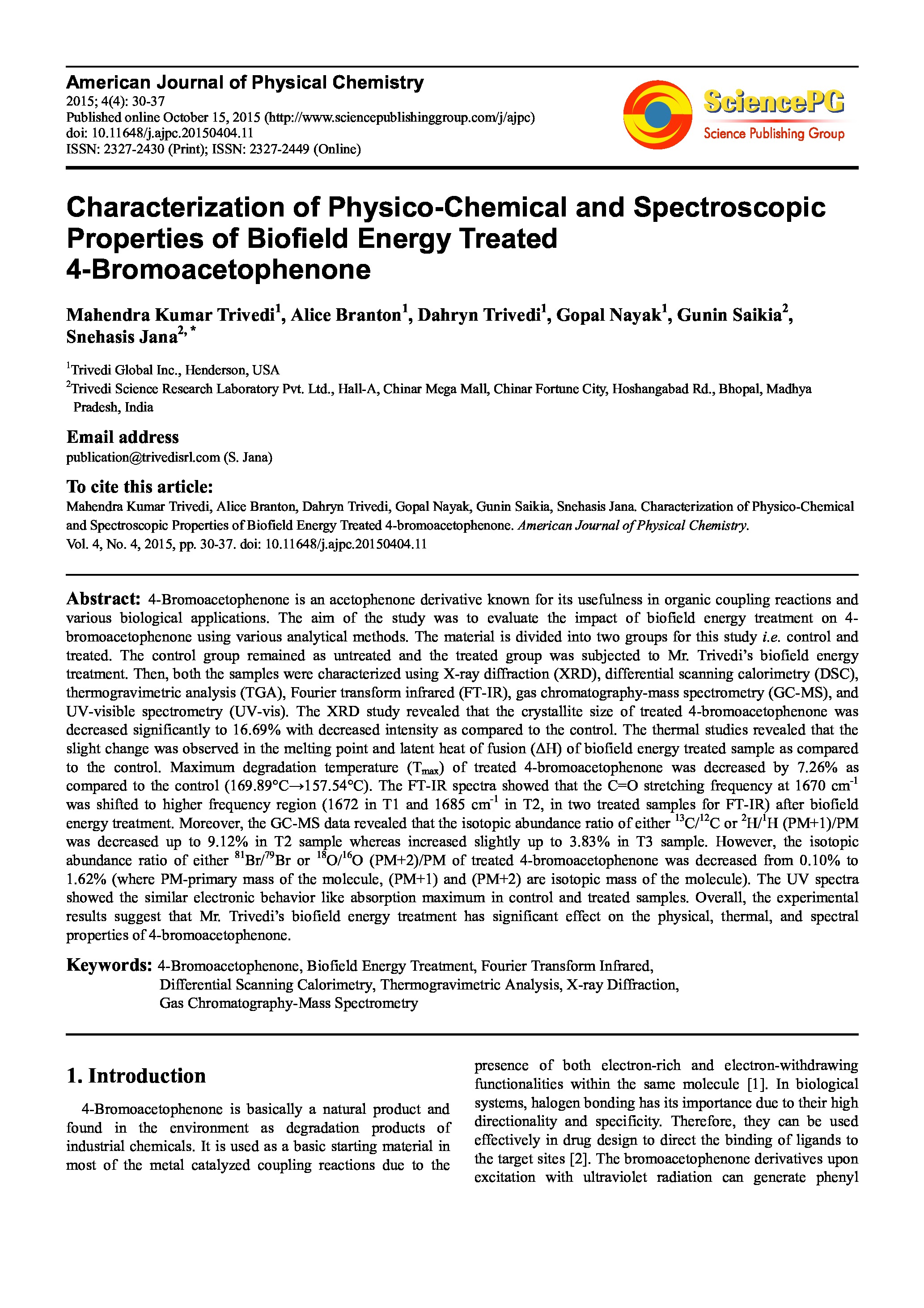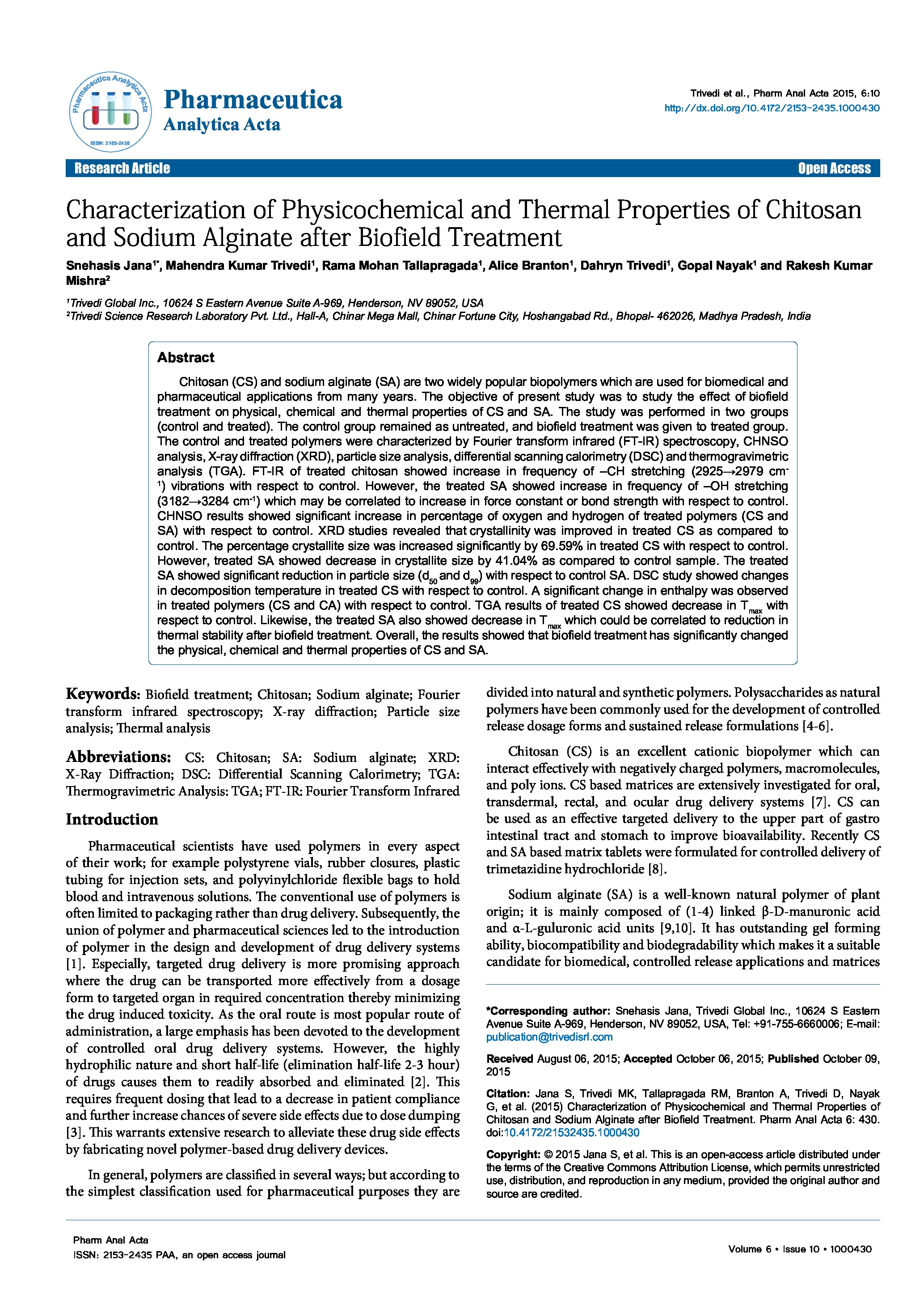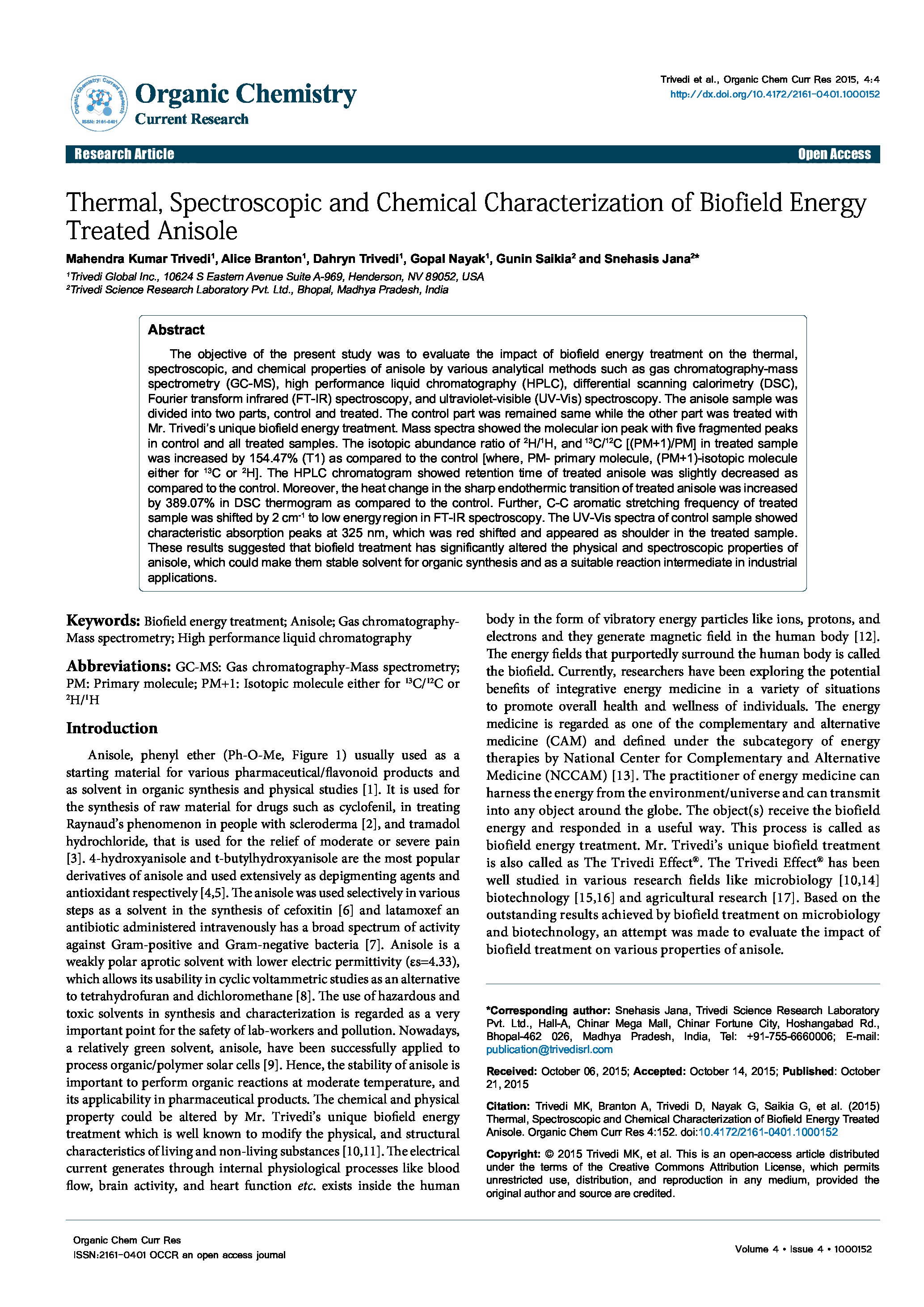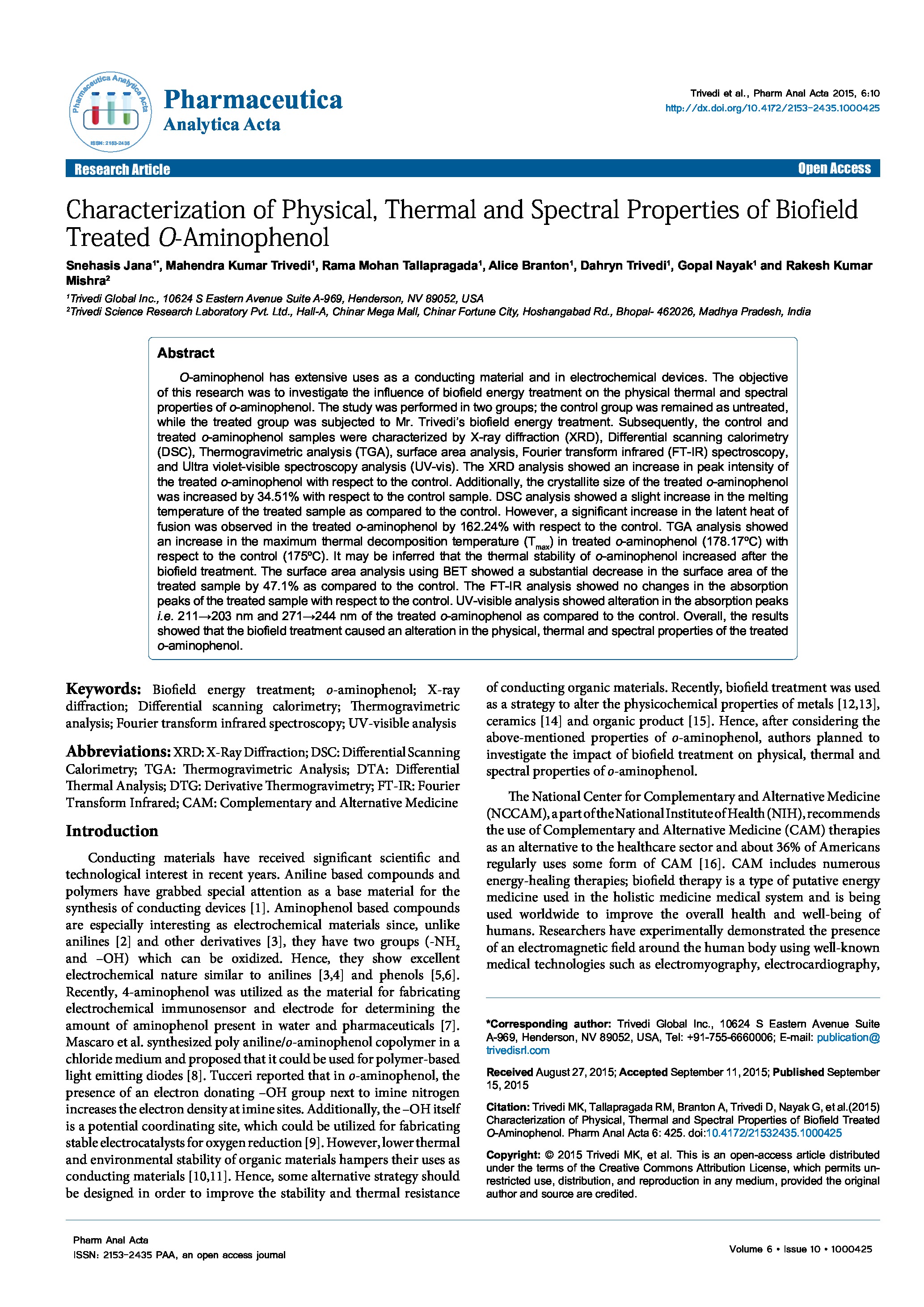Date of upload:
24.11.2016
Co-author:
Mahendra Kumar Trivedi, Alice Branton, Dahryn Trivedi, Gunin Saikia, Snehasis Jana
Abstract:
The objective of the present study was to evaluate the impact of biofield energy treatment on the thermal, spectroscopic, and chemical properties of anisole by various analytical methods such as gas chromatography-mass spectrometry (GC-MS), high performance liquid chromatography (HPLC), differential scanning calorimetry (DSC), Fourier transform infrared (FT-IR) spectroscopy, and ultraviolet-visible (UV-Vis) spectroscopy. The anisole sample was divided into two parts, control and treated. The control part was remained same while the other part was treated with Mr. Trivedi’s unique biofield energy treatment. Mass spectra showed the molecular ion peak with five fragmented peaks in control and all treated samples. The isotopic abundance ratio of 2H/1H, and 13C/12C [(PM+1)/PM] in treated sample was increased by 154.47% (T1) as compared to the control [where, PM- primary molecule, (PM+1)-isotopic molecule either for 13C or 2H]. The HPLC chromatogram showed retention time of treated anisole was slightly decreased as compared to the control. Moreover, the heat change in the sharp endothermic transition of treated anisole was increased by 389.07% in DSC thermogram as compared to the control. Further, C-C aromatic stretching frequency of treated sample was shifted by 2 cm-1 to low energy region in FT-IR spectroscopy. The UV-Vis spectra of control sample showed characteristic absorption peaks at 325 nm, which was red shifted and appeared as shoulder in the treated sample. These results suggested that biofield treatment has significantly altered the physical and spectroscopic properties of anisole, which could make them stable solvent for organic synthesis and as a suitable reaction intermediate in industrial applications.




